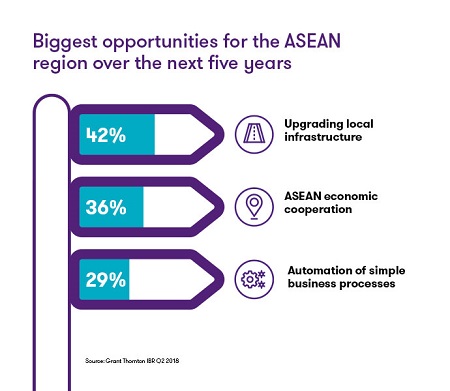-
Audit approach
Designing a tailored audit programme customised for your business, we will combine the collective skill and experience of assurance professionals around the world to deliver an audit that is efficient and provides assurance to your key stakeholders.
-
Audit methodology
At Grant Thornton we use a single audit methodology (LEAP) across our global network. This means that our clients get a consistent, high-quality approach wherever they are.
-
MFRS
At Grant Thornton, our MFRS advisers can help you navigate the complexity of financial reporting.
-
Our local experts
Our local experts
-
Tax advisory & compliance
Our teams can prepare corporate tax files and ruling requests, support you with deferrals, accounting procedures and legitimate tax benefits.
-
Corporate & individual tax
Our teams can prepare corporate tax files and ruling requests, support you with deferrals, accounting procedures and legitimate tax benefits.
-
International tax & Global mobility services
Our teams have in-depth knowledge of the relationship between domestic and international tax laws.
-
Indirect tax
Our indirect tax specialists help clients in effective planning; assist to bring clarity to the legislation; assist and advise in audits or investigations. It is important for all entities, whether or not required to register for Sales Tax or Service Tax to analyse the impact of the taxes on their business operations, their revenues and expenses, and their customers and suppliers.
-
Tax audit & investigation
Tax audit and investigation
-
Transfer pricing
Transfer pricing
-
Corporate finance
Whether you are raising capital, disposing of a business or seeking a wider market for your company's shares on a stock market, we are ready to help make it a successful and stress-free experience for you.
-
Business consulting
Our business consulting services help organisations improve operational performance and productivity throughout the growth life cycle.
-
Recovery and reorganisation
We provide a wide range of services to recovery and reorganisation professionals, companies and their stakeholders.
-
Business risk services
We can help you identify, understand and manage potential risks to safeguard your business and comply with regulatory requirements.
-
Forensic and investigation
We take a 360-degree view of your situation using our deep experience, industry specialization and global reach to help you get to the core of the issue with a full service portfolio of capabilities.
-
Our values
We have six CLEARR values that underpin our culture and are embedded in everything we do.
-
Learning & development
At Grant Thornton we believe learning and development opportunities help to unlock your potential for growth, allowing you to be at your best every day. And when you are at your best, we are the best at serving our clients
-
In the community
Many Grant Thornton member firms provide a range of inspirational and generous services to the communities they serve.
-
Internship
Internship
South East Asia is a bright spot in the global economy. The outlook for the region is sustained, healthy growth of more than 5% per year between now and 2022.(i) Against this backdrop, business sentiment has hit a new high. We explore what is driving this positivity and find that infrastructure emerges as a source of real opportunity for ASEAN firms in the coming years. At the same time, however, concerns over climate change loom large. Greater cooperation will be key to overcoming these environmental risks.
Business optimism among ASEAN businesses is at record levels. Net 64% of firms are optimistic about the outlook for their economy over the next 12 months, according to Grant Thornton’s International Business Report (IBR). Amid this wave of positivity, infrastructure investment is high on the agenda. When asked to select the biggest opportunity for the Asia Pacific (APAC) region over the next five years, 42% of business leaders cited upgrading local infrastructure.

Urbanisation driving infrastructure upgrades
Why is infrastructure such a priority now? Dato Narendra Jasani, Country Managing Partner at Grant Thornton Malaysia, explains that: “The demand for better infrastructure is due to rapidly expanding economies and the boom in travel and movement of goods.”
What’s more, a greater proportion of the growing population is living in urban areas. One forecast expects average overall population growth of just over 1% per year in South East Asia between 2015 and 2020. In urban areas, growth is forecast to be more than twice as fast.(ii)
Policymakers are working to address this trend. The ASEAN Economic Community focused on infrastructure in its June 2018 Economic Integration Brief paper. It highlighted “an urgent need to narrow the infrastructure gap” and specifically called for “infrastructure investment to meet urbanisation needs and the rapid pace of innovation".(iii)
Nowhere is investment in local infrastructure more pressing for businesses leaders than in Indonesia (where 58% upgrading local infrastructure as the region’s greatest opportunity) and the Philippines (48%). In 2016, Indonesian President Joko Widodo outlined his nation-building agenda, where US$327 billion was earmarked to develop numerous infrastructure projects.(iv)
According to Kurniawan Tjoetiar, Partner - Business Advisory/Legal Services at Grant Thornton Indonesia:
“Business appetite for infrastructure development in Indonesia mirrors Government policy. Significant funds are being freed up to spend on boosting networks, and industry leaders are excited about the opportunities these improvements will offer.”
Paving the path to prosperity
As populations become more urban and more integrated with technology, businesses need infrastructure improvements to remove any potential roadblocks. This will require significant investment. The Asian Development Bank estimates that the total outlay for infrastructure investment between the middle of this decade and 2030 could total US$2.8trillion.(v) With these sorts of numbers making headlines, it is no surprise that ASEAN finance ministers have been busy pitching infrastructure projects to investors.
Improving a region’s infrastructure will require some heavy lifting, in more ways than one. But the economic opportunities are clear. Better infrastructure means improved productivity and boosted connectivity. As Rodger Flynn, CEO of Grant Thornton Singapore points out: “Some businesses will benefit more from the direct delivery of roads and airports. Others will reap rewards thanks to more integrated and expansive digital networks.”
Cooperation remains a priority
After infrastructure, Southeast Asian businesses cite increased ASEAN economic cooperation as the next biggest opportunity for the APAC region (36%).
After the ASEAN Economic Community (AEC) was officially recognised in late 2015, the members adopted the AEC Blueprint 2025. Among the stated aims are to establish a more open market, to improve connectivity and to ensure a more business-friendly environment.(vi)
The importance of cooperation across this region becomes even clearer when looking at what firms see as their biggest future threats. Top of the list among ASEAN businesses is regional conflicts regarding competing territorial claims. Nearly one in three firms (29%) say this is what keeps them awake at night most.
The South China Sea is a major trade route and there are many different nations claiming rights to own part of the area. China and the ASEAN countries agreed a draft code of conduct earlier this year which aims to settle these long-running disputes.(vii) This represents encouraging progress. However, businesses will need more certainty before this ceases to be such a prominent concern.
Environmental concerns front of mind for ASEAN businesses ![]()
The shift toward urban populations and the drive to improve infrastructure reflects another threat businesses in South East Asia face. 27% of ASEAN firms believe climate change is the biggest threat to the APAC region. By comparison, it only ranks fifth across Asia Pacific as a whole. It is not hard to see why fears in this part of Asia are particularly acute. According to the Global Climate Risk Index, four of the top ten countries worldwide affected by climate change are in ASEAN.(viii)
The region stands to be disproportionately impacted by climate change for a number of reasons. Chief among them is population density. ASEAN accounts for almost 9% of the world’s population on just 3% of the earth’s land surface. Furthermore, a lot of residential and economic life is concentrated on the region’s coastlines.(ix)
Extreme weather and rising sea levels threaten business activity and, ultimately, livelihoods. These risks are especially pronounced in ASEAN where 8 out of 10 countries are deemed dependent on agriculture and its production.(x)
According Ian Pascoe, CEO and Managing Partner of Grant Thornton Thailand: “Previous summits on climate change have emphasised the need for greater ASEAN cooperation to tackle environmental risks. The good news is that businesses recognise the broader need to work together.”
The opportunities for businesses in the ASEAN region are significant. Particularly for those businesses involved in digital and physical infrastructure improvements underpinning a new wave of development. As economic and business ties across Southeast Asia strengthen, ensuring cooperation will be key to mitigating the challenges our research has identified. Ultimately this will lay the foundation for sustainable growth.
To understand more about the opportunities in the region and how your business can capitalise, contact Rodger Flynn, CEO of Grant Thornton Singapore and Regional Head of Member Firm Development, Asia Pacific.
(i) Source: OECD: Economic Outlook for Southeast Asia, China and India 2018 [PDF, 8 mb]
(ii) Source: ASEAN Secretariat and SIIA [PDF, 132 kb]: Global megatrends: Implications for ASEAN Economic Community, 2017
(iii) Source: ASEAN Economic Integration Brief, June 2018 [PDF, 1 mb]
(iv) Source: Bloomberg Technology, 2018
(v) Source: The Straits Times, 2018
(vi) Source: World Economic Forum, 2018
(vii) Source: The Diplomat, 2018
(viii) Source: World Resources Institute, 2017
(ix) Source: ASEAN Cooperation on Climate Change

